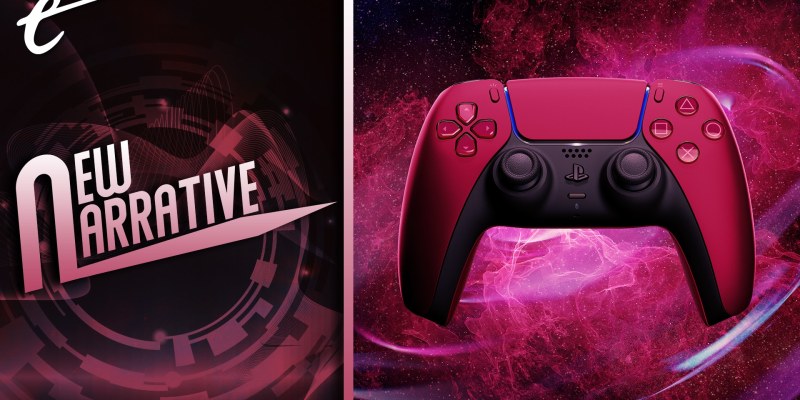A lot has been said about PlayStation 5’s DualSense controller since its launch last November. The haptic feedback can be applied with precision and subtlety that goes far beyond what was possible with older rumble pack controllers, generating anything from the sensation of jumping through puddles and wading through sand in Astro’s Playroom to the tingle of Spider-Sense in Spider-Man: Miles Morales. Meanwhile, the adaptive triggers can be programmed to mimic the trigger break of an assault rifle, the pressure of a spring-loaded mechanism, or indeed anything that can be sensibly translated to a trigger.
Be that as it may, so far commentary has focused on how the controller enhances video games by adding a new layer of immersion. Does Metro: Exodus Enhanced Edition feel better with the addition of different trigger points and resistances for its various weapons, for example? This misses an interesting, albeit highly speculative, discussion about whether and how the DualSense might contribute to fundamentally different video game experiences — experiences that aren’t just enhanced by the DualSense, but that wouldn’t be possible without it (or other controllers like it in the future).
The analogy here is obscure, but it should get across what I have in mind. In China Miéville’s novel Embassytown, there is an alien species that communicates by speaking two words simultaneously. The only humans who can speak the alien language are specially bred twins with shared consciousness, which enables them to express a single thought by using two words spoken through two mouths at once. The duality is essential to the language. It is not that some part of the meaning is lost, but that speech is completely meaningless if only one word is spoken. Likewise, could there be a video game experience that inseparably combines what we see and hear with what we feel through the DualSense?

The most ambitious ideas I have in mind borrow heavily from Miéville’s concept: Imagine a game where your interpretation of the dialogue on screen is affected by the feedback you get through the controller. Think of a kind of inverted Signs of the Sojourner — a game that relies on progressing dialogue by playing a deck of cards that reflect different personality traits — but with haptics and triggers to convey nuances that need to be factored into your responses. Or imagine that, in addition to the dialogue you see on screen, there is a secret language or subtext running in parallel through different kinds of DualSense feedback. This naturally suggests various ideas for bluff and deception games — perhaps the DualSense could imitate nudges, kicks under the table, or handshakes?
There are also obvious implications for synesthesia. I suppose it’s a moot point whether the VR re-release of Tetsuya Mizuguchi’s Rez counts as an enhancement of the flat-screen experience or as a fundamentally different gaming experience. However, there is no denying that the VR version, especially the new Area X level, got closer to achieving Mizuguchi’s synesthetic aspirations than the original. By throwing another sense modality into the mix, with the subtlety and range of feedback offered by the DualSense, perhaps that experience (and similar attempts at synesthesia, like Tetris Effect) could be redefined again.
Not all aspirations for the DualSense need to be so grand, of course. Perhaps the new technology could simply take some of the burden off other elements of game design, such as the UI. Chivalry 2 already has a mechanic that makes the triggers increasingly difficult to press as your avatar runs out of stamina, so it’s not too hard to imagine this concept replacing a stamina bar altogether. Could Ghost of Tsushima’s elegant wind current system, which marks the direction of an objective with a gust of wind rather than an icon on the screen, be relayed entirely through the DualSense’s haptics instead?

Of course, all of this is wild speculation, and I have a tendency to get excited about gaming hardware beyond what it ends up delivering. I am reminded of the promise of the Xbox Kinect whenever I stumble across one in a dusty psychology lab. Other than screaming at squadmates in Mass Effect 3, I no longer remember a single game that used it. Having said that, the DualSense is not an optional add-on peripheral but a core and fully integrated part of a major platform. In that sense, it is positioned much closer to Nintendo’s wildly successful Wii than the ill-fated Kinect.
There would be an obvious price for these sorts of ideas. The games that use them would only be playable with a DualSense, so they would be inaccessible to anyone who does not own one or who cannot use it to its full effect. It would limit both the universality of such games and their sales potential.
On the other hand, the situation would be no different to other titles that are restricted to specific hardware: VR games, the old Guitar Hero titles, or indeed console exclusives. And arguably, for the ability to tell stories in new ways, to tell fundamentally new kinds of stories, to push the boundaries of synesthetic experience, and to convey information through means other than the screen, the price would be worth it.
